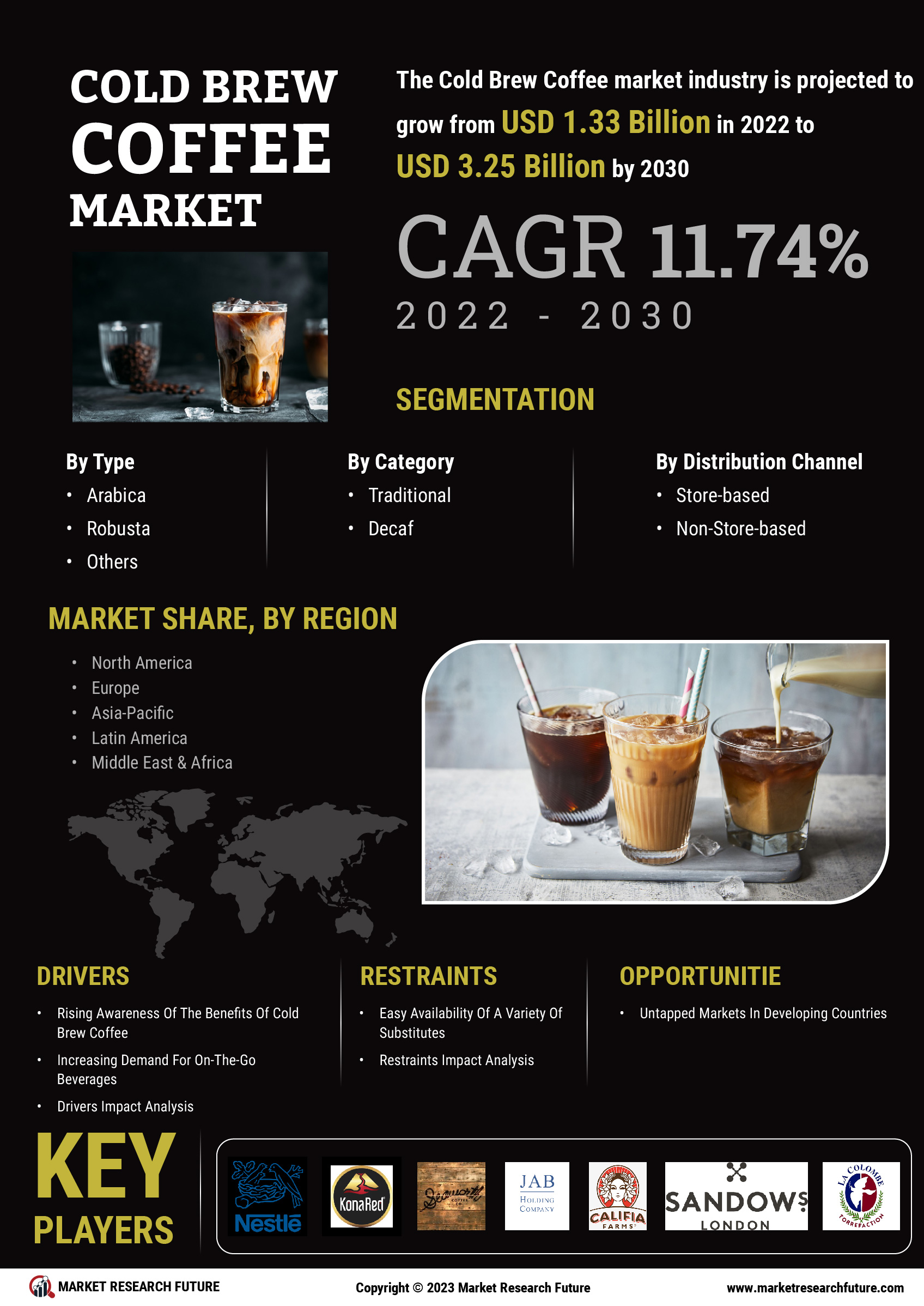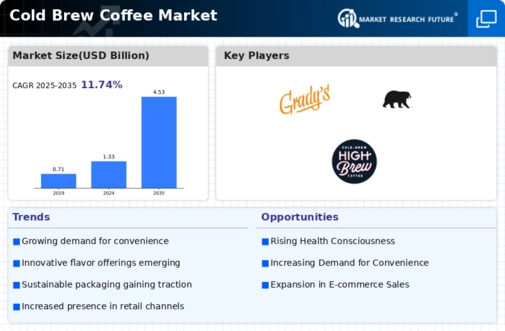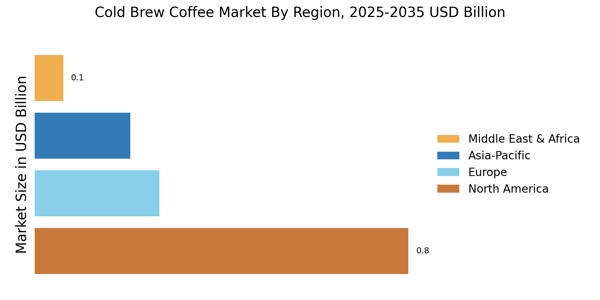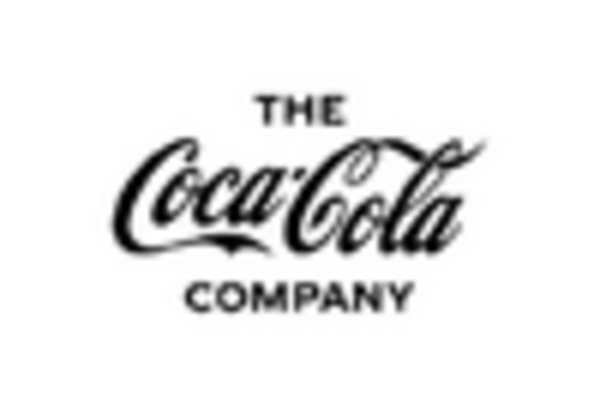Shift Towards Specialty Coffee
The Cold Brew Coffee Market is witnessing a shift towards specialty coffee, driven by consumers' increasing appreciation for high-quality brews. This trend is characterized by a growing interest in artisanal and craft coffee, with cold brew being a favored method of preparation. Specialty coffee shops are expanding their offerings, and cold brew is often highlighted for its smooth flavor profile and lower acidity. In 2023, the specialty coffee segment accounted for over 40% of the total coffee market, indicating a robust consumer preference. This shift not only enhances the Cold Brew Coffee Market but also encourages innovation in brewing techniques and flavor combinations, appealing to a discerning customer base.
Increased Awareness of Health Benefits
The Cold Brew Coffee Market benefits from increased awareness of the health benefits associated with cold brew coffee. Research indicates that cold brew contains lower acidity compared to traditional coffee, making it gentler on the stomach and potentially more appealing to health-conscious consumers. Additionally, cold brew coffee is often perceived as a source of antioxidants, which may contribute to its growing popularity. As consumers become more health-oriented, the Cold Brew Coffee Market is likely to see a rise in demand for products that emphasize these health benefits. This trend may also lead to the introduction of functional cold brew beverages infused with additional health-promoting ingredients, further diversifying the market.
Expansion of Cold Brew Coffee Offerings
The Cold Brew Coffee Market is experiencing an expansion of product offerings, catering to diverse consumer preferences. Brands are introducing a variety of flavors, including seasonal and limited-edition options, to attract a broader audience. This diversification is supported by market data indicating that flavored cold brew products have seen a 25% increase in sales over the past year. Additionally, the rise of cold brew coffee concentrate allows consumers to customize their beverages at home, further driving market growth. As the Cold Brew Coffee Market continues to evolve, the introduction of innovative products is likely to play a crucial role in attracting new customers and retaining existing ones.
Rising Demand for Ready-to-Drink Beverages
The Cold Brew Coffee Market experiences a notable surge in demand for ready-to-drink beverages. Consumers increasingly seek convenient options that fit their busy lifestyles. This trend is reflected in the growing sales of bottled cold brew coffee, which reached approximately 1.5 billion USD in 2023. The preference for ready-to-drink formats is likely to continue, as consumers prioritize convenience without compromising on quality. Additionally, the Cold Brew Coffee Market benefits from the expansion of distribution channels, including supermarkets and online platforms, making these products more accessible. As a result, brands are innovating to meet consumer preferences, potentially leading to a broader range of flavors and formulations in the market.
Sustainability Initiatives in Coffee Production
Sustainability initiatives are increasingly influencing the Cold Brew Coffee Market. Consumers are becoming more environmentally conscious, seeking products that align with their values. This has prompted coffee producers to adopt sustainable practices, such as ethical sourcing and eco-friendly packaging. In 2023, approximately 30% of consumers reported that they prefer brands that prioritize sustainability. This trend is likely to drive innovation within the Cold Brew Coffee Market, as companies explore ways to reduce their environmental impact while maintaining product quality. Furthermore, the emphasis on sustainability may enhance brand loyalty, as consumers are more inclined to support companies that demonstrate a commitment to ethical practices.


















Leave a Comment